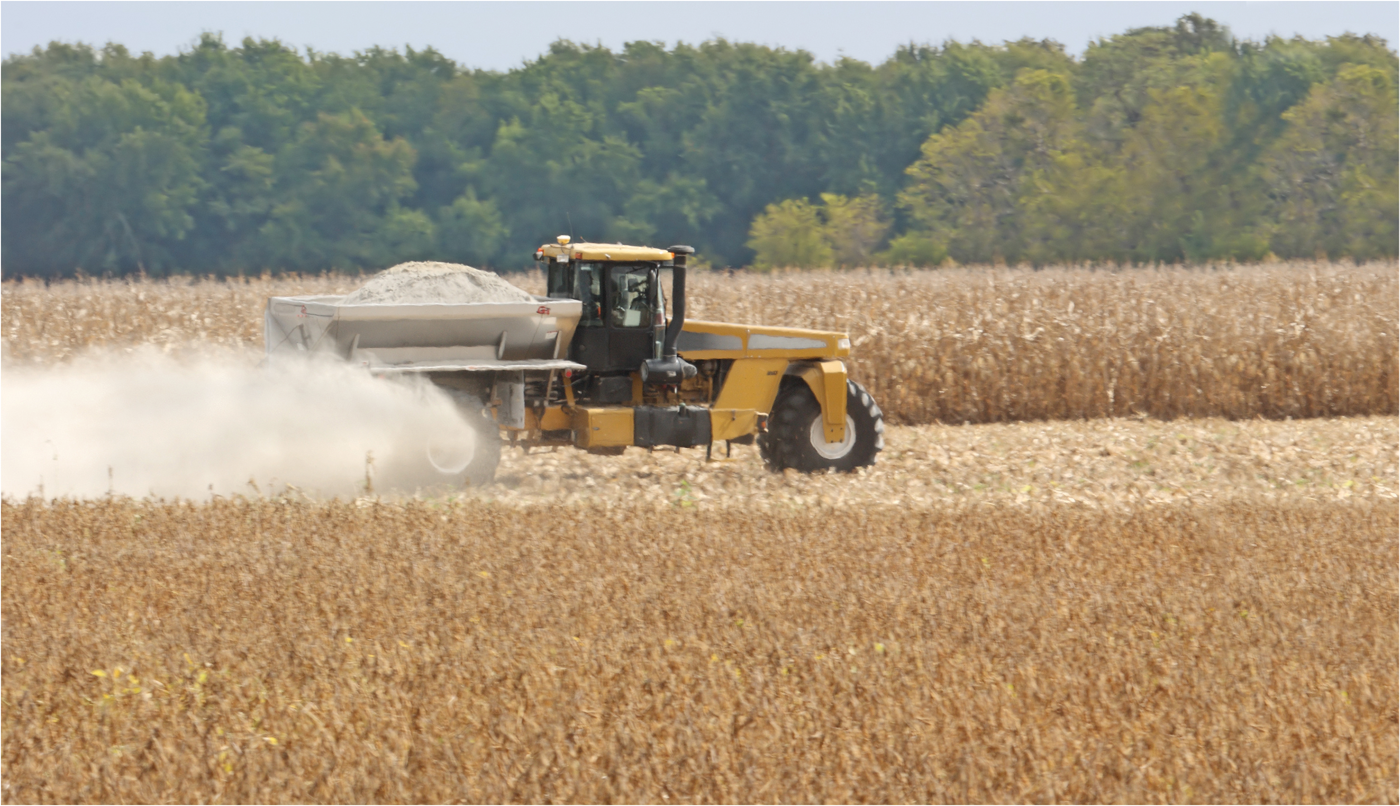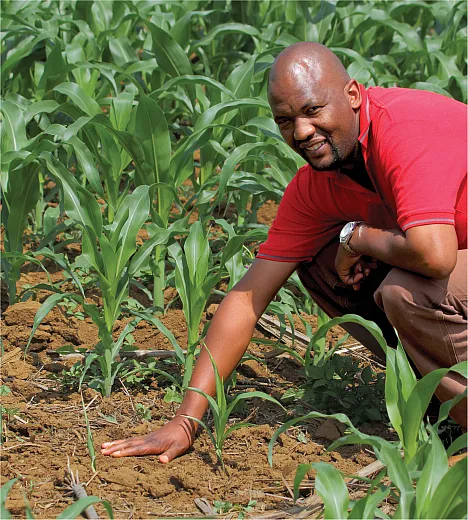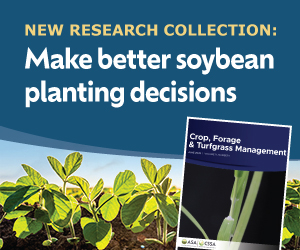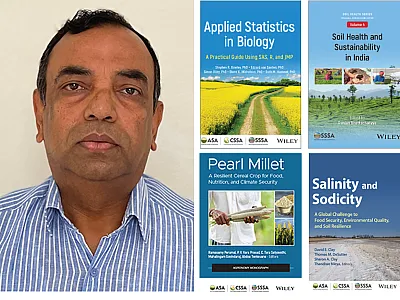Managing Soil Acidity, Not Soil Balancing, Affects Yield


It can be hard to convince people of something when they think their lived experience suggests otherwise. That’s the challenge facing scientists trying to convince organic farmers that soil balancing—specifically through the base cation saturation ratio method—doesn’t actually improve crop yield. New research echoes previous work showing crop yields are affected by pH but not the calcium-magnesium ratio soil balancing. Earn 0.5 CEUs in Soil & Water Management by reading this article and taking the quiz.
It can be hard to convince people of something when they think their lived experience suggests otherwise. That’s the challenge facing scientists trying to convince organic farmers that soil balancing—specifically through the base cation saturation ratio method, or BCSR—doesn’t actually improve crop yield. No scientific evidence exists for there being an ideal calcium–magnesium ratio, yet “people believe that calcium–magnesium ratios are essential for managing and balancing soils,” says Steve Culman, Associate Professor and Endowed Chair of Soil Science at Washington State University in Pullman. Culman and his colleagues’ latest paper (https://doi.org/10.1002/cft2.20210) in Crop, Forage & Turfgrass Management examines this issue again: Does calcium–magnesium soil balancing increase yield? And the answer, Culman says, is unequivocally no. What does increase yield, however, is pH, according to the research.
The idea of soil balance affecting crop yield dates back to the 1800s though work in the 1940s solidified the theory. Since then, many farmers have worked to create an “ideal soil,” which should consist of something like 60–75% calcium, 10–20% magnesium, 3–5% potassium, and 15% other cations like hydrogen, so the theory goes. The theory suggests that high magnesium levels in soils lead to “tight” soils with limited aeration and that higher calcium levels lead to looser soils.
“Some agronomists, consultants, commercial soil‐testing labs, and farmers strongly subscribe to this practice and continue to use it to guide their soil management decisions and nutrient recommendations,” wrote Culman and Vijayasatya Chaganti in a review on this topic in 2017 (https://doi.org/10.2134/cftm2016.10.0072). In fact, many conventional farmers, sports turf growers, and most organic farmers in the Midwest still follow this practice. Organic growers use soil balancing as one part of their holistic approach to soil health, says Andrea Leiva Soto, a post‐doctoral researcher at Texas A&M AgriLife Research in Amarillo and lead author of the new paper in Crop, Forage & Turfgrass Management.
The usage of BCSR in all of these industries occurs despite the fact that “the common outcome of every study that has been conducted for crop yield response to varying cation ratios [has refuted] the existence of an ideal ratio or a balanced soil,” Chaganti and Culman wrote.
So why keep doing it? Balancing soil isn’t free. Farmers have to apply amendments to increase calcium, which costs money, energy, and time. The only way to get that money back is with higher yields.
So Culman, Leiva Soto, who performed the work as part of her doctoral thesis at Ohio State University in Wooster, and their colleagues undertook a six‐year‐long study of small organic plots in Ohio to see if they could find any signal that yields were indeed increasing through soil balancing. The soil was a moderately well‐drained silt loam with an initial pH of 5.9. The team planted corn, soybean, and small cereal grains in rotation with each crop growing every year of the study. They chose these crops because they’re the most common crops in Ohio, Culman says.
From 2015–2020, the team applied gypsum and high‐calcium lime to increase calcium levels. They also applied two different types of lime—high‐calcium lime or dolomitic lime—to increase the soil pH over that time. This allowed the team to test both whether BCSR increased yield as well as whether increasing pH improved yield. It also allowed them to test whether high‐calcium lime, the preferred—and more expensive—form of lime used by organic growers, produced higher yields than dolomitic lime. Throughout the experiment, the team collected soil cores to measure how soil properties changed after the amendments were applied. And they analyzed crop yield data each year as well as year over year.
Results showed that amendments altered soil cation exchange capacity, cation base saturation, and pH, and calcium levels increased in the plots that received high‐calcium lime or gypsum amendments. Over the six‐year period, soils amended with gypsum or gypsum and high‐calcium lime were “within BCSR ideal ranges for both calcium and magnesium saturation,” Leiva Soto and colleagues reported. The soils that did not receive gypsum or gypsum plus high‐calcium lime “would be considered highly out of balance,” they wrote.
Over the life of the experiment, only corn yields varied significantly, and they only varied in fields that had lime applied to raise the pH. For the first two years when pH hadn’t yet increased significantly, corn yields were relatively even. But as pH rose in the third year on the lime‐amended fields, corn yield doubled and stayed that much higher for the remainder of the experiment. The average pH across the fields with lime applications was at 7.0 (somewhere between 6.0 and 7.0 optimizes crop production, Leiva Soto notes). Soybean yield increased slightly starting in Year 3 and stayed about the same, but soybean generally isn’t as responsive to pH as corn. The team didn’t analyze the small‐grain yields due to the small sample size.
“We tried our damnedest but just cannot find evidence” of calcium–magnesium ratios affecting yield, Culman says. “There’s just no signal.”
But there is a strong signal that managing soil acidity does affect crop yields, especially for corn, Leiva Soto says. Higher “pH drove higher yields for corn than the calcium‐to‐magnesium ratio.” In addition, she says, there was no yield difference between high‐calcium lime and dolomitic lime—the results were the same. Given that dolomitic lime is less expensive, she adds, it would make more sense for farmers to switch to that lime source.

It would also make sense for farmers to stop applying tons of calcium on their fields in any form, Culman says. Plants need calcium, of course, but most soils have enough for crops like corn, soybean, and grains. It doesn’t hurt to add a little, but why spend the money to add tons to change the structure of the soil if that doesn’t make a difference in yield? Applying calcium to balance soils results in unnecessary fertilization rates. “It all comes back to economics.”
Proponents of BCSR, however, say soil balancing also helps with other issues, like pest and weed control. Previous research has not confirmed that soil balancing plays any role in pest or weed control, but it has not denied it either. The idea, Leiva Soto says, is that by changing the soil structure through calcium amendments, you decrease weed pressure. Farmers say they see fewer weeds in soils with high calcium levels due to the soils being looser. They say they see more weeds, especially grass weeds, in tighter soils with higher magnesium and lower calcium levels. “We found some signs of what the farmers were saying,” she says. That research is being prepped for publication, so stay tuned, she adds.
Aside from that potentially positive note about calcium amendments and weed suppression, Leiva Soto says, the main takeaway from this research is that for corn growers in the Midwest, the story is pH, not calcium–magnesium ratios, if you want to increase yield.
Even though previous studies have found the same results that this team did (that calcium–magnesium balancing doesn’t increase yields), Culman says the research is still important. It doesn’t help to just tell farmers not to do something when they think it’s working for them, he says. Doing the research and putting out the scientific evidence, he says, is the best way to provide growers with the best possible information.
DIG DEEPER
Read the original article, Managing Soil Acidity vs. Soil Ca:Mg Ratio: What Is More Important for Crop Productivity?, in Crop, Forage & Turfgrass Management at https://doi.org/10.1002/cft2.20210
Also of interest is “Historical Perspective of Soil Balancing Theory and Identifying Knowledge Gaps: A Review” at https://doi.org/10.2134/cftm2016.10.0072
Self-Study CEU Quiz
Earn 0.5 CEUs in Soil & Water Management by taking the quiz. For your convenience, the quiz is printed below. The CEU can be purchased individually, or you can access as part of your Online Classroom Subscription.
- The soil‐balancing theory suggests that high magnesium levels in soils lead to
- “loose” soils.
- soils with with limited aeration.
- soils with higher aggregate stability.
- soils with increased drainage.
- In the study described in this article, the soils that did not receive gypsum or gypsum plus high‐calcium lime were considered highly out of balance according to the base cation saturation ratio method.
- True.
- False.
- According to Andrea Leiva Soto, crop production is optimized in the pH range of somewhere between
- 5.0 and 6.0.
- 6.0 and 7.0.
- 7.0 and 8.0.
- None of the above.
- Andrea Leiva Soto recommends farmers use dolomitic lime because
- it is less expensive.
- it results in higher yields.
- it lowers pH.
- it places soils in the ideal calcium–magnesium ratio.
- Previous research has confirmed that soil balancing helps with pest and weed control.
- True.
- False.
Text © . The authors. CC BY-NC-ND 4.0. Except where otherwise noted, images are subject to copyright. Any reuse without express permission from the copyright owner is prohibited.










